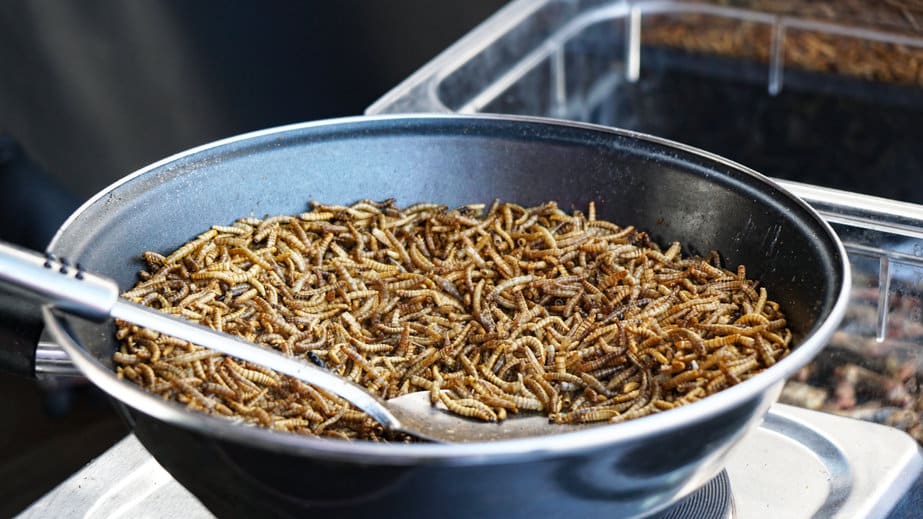By John Salak –
European researchers have gone buggy over the potential of using insect protein to help battle the impact of climate change associated with food consumption in Europe.
Two Finnish universities focused on comparing insect protein production to that of soybean protein in broilers.
Their findings support earlier research that showed insect protein has the greatest potential to reduce carbon-related footprints of European consumers. The catch, however, is that edible insects—such as crickets, flies and worms—have to be gobbled up directly or processed into food. Besides eating these insects fresh, which admittedly may face reluctance from consumers, these edible creatures can be dried and processing into flour for use in bread or pasta.
“Our results indeed suggest that it is more sustainable to use insect protein for food rather than to use it to replace soybean meal in animal feed. Yet we found that a shift to using low-value food industry side stream products—such as catering waste or by-products, for example, from fish processing—in insect production for chicken feed is key to decisively increasing the carbon footprint benefits of using insect protein over soybean meal protein,” says Professor Bodo Steiner from the University of Helsinki, Finland.
The work of the two Finnish universities have come in the facing of growing concerns over the increasing deforestation associated with the rapid expansion of global soybean cultivation. This protein is major source of feed for livestock raised for meat production.
Eating bugs, also known as entomophagy, is nothing new for many people, as WellWell reported a year ago. In fact, an estimated two billion people worldwide consume bugs to receive a sizeable portion of their daily requirements for proteins, vitamins, minerals, and polyunsaturated fats, according to the United Nations.
Of course, most of these people don’t live in Europe, North America, Australia or similar regions where demand for insect-based cuisine is pretty slim. However, the impact of food processing on climate change, coupled with food shortages in some regions, may change this.
Last year, researchers out of Indiana University-Purdue University Indianapolis (IUPUI) reported that the overlooked yellow mealworm, for example, showed great promise as an alternative protein source.
“Human populations are continuing to increase and the stress on protein production is increasing at an unsustainable rate, not even considering climate change,” said Christine Picard, associate professor at IUPUI. “Mealworms, being insects, are a part of the natural diet of many organisms. Fish enjoy mealworms, for example. They could also be really useful in the pet food industry as an alternative protein source, chickens like insects — and maybe one day humans, too, because it’s an alternative source of protein.”
Using insects for human and animal consumption would not only reduce the carbon footprint of European consumers, it would also reduce incentives to destroy the Amazon rainforest for soybean cultivation. The Finnish researchers stressed, however, that when comparing the impact of human versus animal insect consumption, people munching bugs offer the biggest environmental bang for each mouthful.













